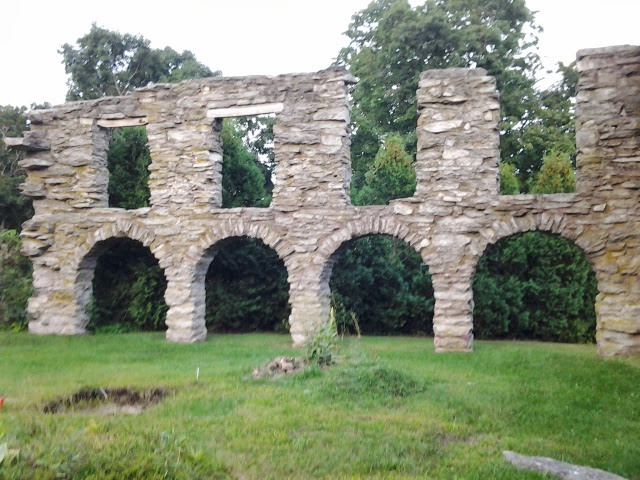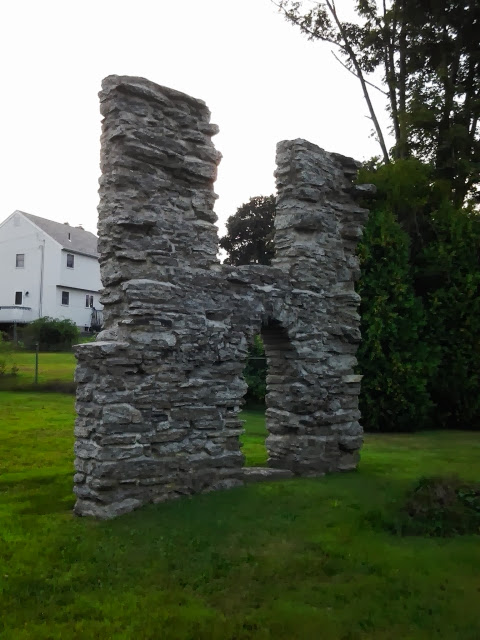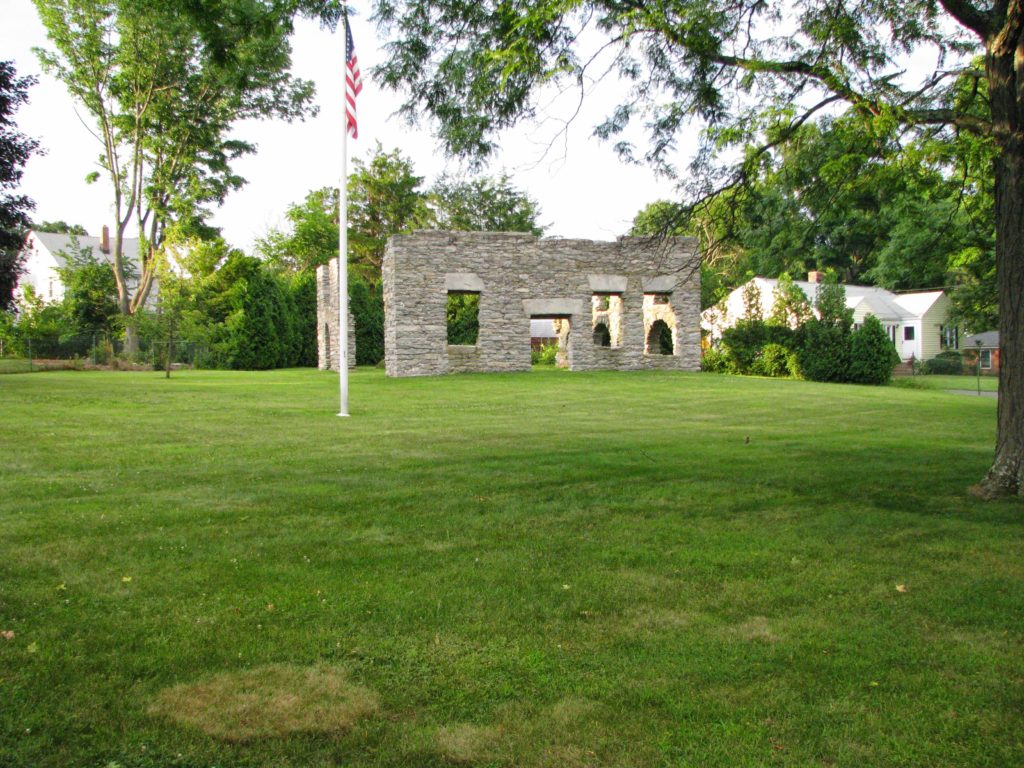In 1783 William Pitkin, Elisha Pitkin and Samuel Bishop requested permission from the Connecticut General Assembly to produce glass. They requested a 25 year monopoly, which was granted because the Pitkin family had provided gun powder (from their powder mill in what is now East Hartford) to the Continental Army during the American Revolution and evidently had not been paid in full. The reason for the monopoly was to allow the company to get established and develop markets without competition from other Connecticut glass factories.
The stone building (still standing but minus the roof, at the corner of Parker and Putnam Streets) was erected by 1785 on part of the Pitkin family farm. The company was known as the East Hartford Glass Works as present day Manchester was then part of East Hartford and known as the Orford Parish Society.
It took several years to get the business up and running, and to find a person with experience in making glass to oversee the construction of the factory, recruit and train laborers and find sources of materials that are used in making glass.
After production began and advertisements were placed in the Hartford newspaper and other papers, it appears that the finances were shaky. In 1789 the company requested permission from the Connecticut Legislature to conduct a lottery to raise funds to help operate the company. That lottery turned out to be a failure as it raised only a small amount of money. A second lottery was held in 1791 and that lottery also failed to raise much money.
In spite of these setbacks, the company did manage to carry on for many years. Good quality sand was obtained from southern New Jersey, where many glass factories were in operation. It was brought by barge up the Connecticut River to East Hartford and hauled to the factory by ox cart. Wood to supply the fires for the kilns, which were kept burning 24 hours a day, seven days a week while glass was being made, came from the surrounding area. In time the supply of available firewood diminished as trees were cleared to create farm land. Reportedly the large crucibles in which the glass ingredients were melted to a molten form were also made at the factory site, although this has not yet been proven.
A wide variety of bottles, flasks, inkwells, demijohns and other glass products were made here. All were of a similar color, mostly olive green as well as other shades of green. This color was due mostly to the type of sand used in the glass. Almost none of the products were marked with the name of the factory, and now it is very difficult to determine if a particular bottle was made here. However, there were a very few flasks and inkwells that were marked with the name “Spencer” or the initials “JPF.” Those items so marked command very high prices from avid collectors, some upwards of $50,000.
By about 1830 there was increasing competition from other Connecticut glass factories, including those at Coventry, Glastonbury, Mansfield, Willington and a few others. This may have resulted in the Pitkin operation becoming less profitable, perhaps even a money loser. That is about when production by Pitkin Glass Works seems to have stopped. Over time the building fell into disrepair. It is quite probable that thrifty locals, including Pitkin family itself, used parts of the abandoned building for other purposes. The wooden roof structure and the doors and windows would have been attractive for reuse. It is not known what happened to the rear stone wall that is now missing.
In the late 1800’s and early 1900’s the site was a popular place for locals to visit and picnic on a Sunday. They came by bicycle and by foot.
In the recent past school students from Bennet and Illing Middle Schools have carried out limited archaeological digs at the site, under the supervision of State Archaeologist Dr. Nicholas Bellantoni. As expected much broken glass and shards have been unearthed. Also discovered have been a few coins from the late 1700’s and early 1800’s and some buttons. Most interesting was the discovery of a very small bottle, about 1 ¼” high and in the perfect shape of a chestnut bottle. It may have been made for perfume or smelling salts or just as a “whimsy.” These discoveries and other examples of Pitkin bottles are now on display at the Old Manchester Museum at 126 Cedar St.
Recent History
In 1928, Mr. and Mrs. Frederick W. Pitkin and others of the Horace Pitkin family quit-claimed the Glass Works property to the Orford Parish Chapter of the Daughters of the American Revolution. Finding the increasing cost of maintenance a burden, a suggestion was made in 1977 that the property be sold for commercial purposed. A group of interested citizens, led by Edson Bailey, protested this possibility and formed a committee to preserve this historic site for the community and beyond.
The glass works site is overseen and maintained by the Executive Council of the Pitkin Glass Works, Inc., which is comprised of representatives of the Town of Manchester, the Daughters of the American Revolution and the Manchester Historical Society. The property has been on The National Register of Historic Places since 1979.








